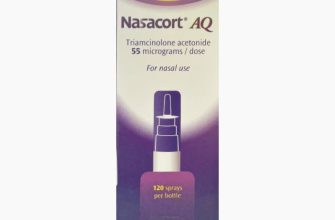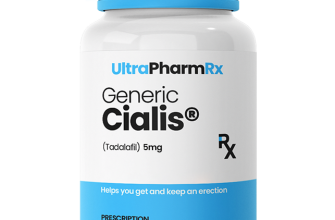If you’re exploring treatment options for mood disorders, consider Topamax (topiramate). This medication has shown promise in stabilizing moods and is often prescribed off-label for conditions like bipolar disorder and depression. As a carbonic anhydrase inhibitor, Topamax can help balance neurotransmitters, offering relief from mood swings and agitation.
Clinical studies indicate that Topamax may reduce depressive symptoms while minimizing the risk of side effects compared to traditional antidepressants. Patients experiencing mood instability may benefit from starting with a low dose to monitor tolerance and effects. Gradually increasing the dosage can enhance therapeutic outcomes while mitigating potential discomfort.
As you discuss treatment plans with your healthcare provider, inquire about Topamax’s role in your specific situation. Combining Topamax with other therapeutic interventions, such as psychotherapy, enhances its effectiveness. Tracking your mood changes can provide valuable information for both you and your doctor, facilitating adjustments in your treatment strategy for optimum results.
- Topamax for Mood Disorders
- Mechanism of Action
- Dosing and Considerations
- Mechanism of Action of Topamax
- Evidence Supporting Topamax for Mood Disorders
- Clinical Findings
- Dosage and Considerations
- Dosage Guidelines for Mood Disorders
- Potential Side Effects and Risks of Topamax
- Comparing Topamax with Other Medications for Mood Disorders
- Topamax vs. Traditional Mood Stabilizers
- Topamax vs. Atypical Antipsychotics
- Patient Experiences and Testimonials about Topamax
- Consultation with Healthcare Professionals on Topamax
Topamax for Mood Disorders
Topamax, also known as Topiramate, offers promise in the treatment of mood disorders, particularly for conditions like bipolar disorder and unipolar depression. Clinical studies indicate that this anticonvulsant can stabilize mood and may help reduce depressive episodes.
Mechanism of Action
This medication works by modulating neurotransmitters in the brain, particularly enhancing GABA activity and inhibiting glutamate. These changes can lead to improved mood and decreased anxiety. Patients often report fewer mood swings and a more stable emotional state while on Topamax.
Dosing and Considerations
The typical starting dose for mood disorders is low, around 25 mg per day, gradually increasing to an effective dose based on tolerance and therapeutic response. Regular follow-ups with a healthcare provider are crucial to monitor effectiveness and side effects. Some users may experience side effects like dizziness, fatigue, or weight loss, which should be discussed with a healthcare professional. It’s imperative to assess all medications to avoid potential interactions.
For those struggling with mood disorders, Topamax may offer a beneficial addition to a comprehensive treatment plan, enhancing overall emotional well-being.
Mechanism of Action of Topamax
Topamax (topiramate) operates through multiple mechanisms that influence mood disorders. It primarily enhances the activity of gamma-aminobutyric acid (GABA), an inhibitory neurotransmitter, which can help stabilize mood. By increasing GABAergic activity, Topamax may promote a calming effect on the brain, reducing anxiety and irritability.
Additionally, Topamax inhibits the excitatory neurotransmitter glutamate. By decreasing excessive glutamate activity, it helps in minimizing mood swings that are often seen in mood disorders. This balance between excitatory and inhibitory signals is crucial for mood regulation.
Topamax also influences voltage-gated sodium channels, stabilizing neuronal membranes and preventing rapid firing of neurons. This stabilization can reduce the likelihood of mood episodes, providing a more consistent mood state.
Another aspect of Topamax’s action is its effect on carbonic anhydrase. By inhibiting this enzyme, Topamax can alter bicarbonate levels and pH in the brain, which may contribute to its mood-stabilizing effects.
For those using Topamax for mood disorders, understanding its multifaceted mechanisms can enhance the overall treatment strategy and help in managing symptoms more effectively. Regular consultations with a healthcare provider are essential to monitor effectiveness and make necessary adjustments.
Evidence Supporting Topamax for Mood Disorders
Topamax (topiramate) shows promise in treating mood disorders, particularly in individuals with bipolar disorder and those experiencing recurrent depressive episodes. Clinical studies indicate that Topamax may help stabilize mood and reduce depressive symptoms.
Clinical Findings
Data from various research studies demonstrate the efficacy of Topamax in mood regulation. A controlled trial involving adults with bipolar disorder revealed significant reductions in manic and depressive episodes among those treated with Topamax compared to a placebo group. Additionally, a meta-analysis highlighted a marked improvement in mood stability in patients using Topamax as an adjunctive treatment.
Dosage and Considerations
The typical dosage for mood disorders ranges from 50 mg to 200 mg per day, depending on individual response and tolerance. Monitoring is essential, as some patients may experience side effects such as cognitive impairment or weight changes. It’s advisable to initiate treatment at a lower dose and gradually increase to assess tolerance.
| Study | Participants | Findings |
|---|---|---|
| Bipolar Disorder Trial | 200 adults | Significant reduction in manic and depressive symptoms |
| Adjunctive Treatment Analysis | 150 participants | Improved mood stability when combined with standard treatments |
| Weight Management Study | 100 patients | Notable impact on reducing weight gain associated with antidepressants |
Topamax provides a valuable option for individuals struggling with mood disorders. Regular follow-ups and careful management can enhance treatment outcomes and ensure patient safety.
Dosage Guidelines for Mood Disorders
The typical starting dose of Topamax for mood disorders is 25 mg per day. Gradually increase the dosage each week to minimize side effects. A common target dosage ranges from 100 mg to 200 mg daily, divided into two doses.
If you experience sedation or cognitive side effects, consider slowing the titration process. Consult with a healthcare provider if adjustments are needed. Some patients may benefit from a maximum dosage of 400 mg per day, depending on their response to the medication.
Monitoring regularly is key. Schedule follow-up appointments to assess the treatment’s effectiveness and any side effects. Blood tests may be necessary, especially for those on higher doses, to check for metabolic issues.
Always adhere to the prescribed dosage; do not abruptly discontinue use as it can lead to withdrawal symptoms. Taper off gradually under your doctor’s guidance when discontinuation is necessary.
Staying hydrated is also important while on Topamax, as it can increase the risk of kidney stones. Maintain open communication with your healthcare provider throughout your treatment journey.
Potential Side Effects and Risks of Topamax
Monitor for side effects when taking Topamax for mood disorders. While it can provide benefits, being aware of potential adverse effects is essential.
- Cognitive Impairment: Users may experience difficulties with concentration, memory problems, and confusion. These effects can impact daily activities.
- Weight Loss: Topamax often leads to weight loss, which can be significant. Regularly assess your weight and discuss any concerns with a healthcare provider.
- Fatigue: A common side effect includes feelings of tiredness or lethargy. If this becomes unmanageable, consult your doctor.
- Kidney Stones: There is an increased risk of developing kidney stones. Stay hydrated and discuss preventive measures with your healthcare professional.
- Changes in Mood: Some users report mood swings or irritability. Monitor emotional health and report any concerning changes to your mental health care provider.
- Visual Disturbances: Blurred vision or other visual changes may occur. Seek medical advice if you develop these symptoms.
Individuals with a history of kidney issues, glaucoma, or metabolic disorders should exercise caution when considering Topamax. Regular follow-ups with a doctor can help mitigate risks and ensure safe usage. Always report any unusual side effects or concerns timely.
Stay informed and proactive about monitoring your health while using this medication.
Comparing Topamax with Other Medications for Mood Disorders
Topamax (topiramate) offers a unique approach to managing mood disorders, particularly in patients who experience symptoms alongside other conditions like migraines or epilepsy. Research suggests that Topamax may improve mood stability due to its action on neurotransmitters. However, comparing it to alternatives such as mood stabilizers or atypical antipsychotics reveals distinct differences that can influence treatment decisions.
Topamax vs. Traditional Mood Stabilizers
Traditional mood stabilizers such as lithium and lamotrigine primarily target mood swings and prevent manic or depressive episodes. Topamax, while also functioning as a stabilizer, is often preferred when patients face comorbidities. The side effect profiles differ; for instance, Topamax can lead to cognitive effects, which might not be present with lithium. Regular monitoring of renal function and thyroid levels is essential with lithium, while Topamax usage requires observation for metabolic acidosis, especially in those with predisposition to kidney stones.
Topamax vs. Atypical Antipsychotics
Atypical antipsychotics like quetiapine and olanzapine are frequently prescribed for mood disorders due to their sedative effects and ability to balance mood over time. Topamax’s potential to cause weight loss can contrast with the weight gain associated with many antipsychotics. However, atypical antipsychotics often provide a quicker response time in alleviating acute mood symptoms. It’s crucial to evaluate the specific symptoms and treatment goals to determine which class of medications aligns better with a patient’s needs.
Patient Experiences and Testimonials about Topamax
Many patients report noticeable improvements in their mood after starting Topamax. A user shared that within a few weeks of treatment, they felt a significant reduction in anxiety levels, allowing them to engage more fully in daily activities. This change made social interactions easier, contributing to a more balanced emotional state.
Another individual noted that Topamax helped with their emotional regulation, stating that the medication reduced the intensity of mood swings they previously experienced. By stabilizing their mood, they found it easier to manage stress and engage in relationships without feeling overwhelmed.
Patients also mention side effects, with some experiencing drowsiness initially. However, many reported that this side effect diminished over time as their bodies adjusted. One user suggested gradually increasing the dosage under a doctor’s supervision, which helped minimize discomfort.
A parent of an adolescent using Topamax shared heartwarming feedback on how their child became more open and communicative, leading to improved family dynamics. They emphasized the importance of regular follow-ups with the prescribing doctor to track progress and make necessary adjustments.
Some users highlighted enhanced cognitive clarity, making daily tasks and decision-making less daunting. This cognitive boost often complements the emotional benefits, creating a more holistic improvement in quality of life.
In summary, many patients acknowledge the positive impact Topamax has had on their mood disorders. Each person’s experience varies, and ongoing communication with healthcare providers remains crucial for optimizing treatment.
Consultation with Healthcare Professionals on Topamax
Before starting Topamax for mood disorders, engage in a detailed discussion with your healthcare provider. Address any pre-existing conditions, current medications, or allergies to ensure safe usage.
Key topics to discuss include:
- Indications: Clarify how Topamax may benefit your specific mood disorder.
- Dosing: Understand the recommended dosage and the importance of adherence to prescribed guidelines.
- Side Effects: Get a comprehensive list of potential side effects, including cognitive effects, weight changes, and fatigue.
- Monitoring: Discuss the frequency of follow-up appointments to monitor your response to the medication.
- Alternatives: Explore alternative treatments if Topamax poses concerns or if you experience adverse effects.
Consider asking your provider about lifestyle adjustments or holistic approaches that can complement Topamax therapy. Engaging in regular physical activity, balanced nutrition, and mindfulness practices may enhance treatment outcomes.
Communicate openly about your experiences and any significant changes you notice while taking Topamax. This feedback will help your provider tailor your treatment plan effectively.
Lastly, if you have any questions about the long-term implications of using Topamax, don’t hesitate to ask. An informed decision leads to better management of your mood disorder.







